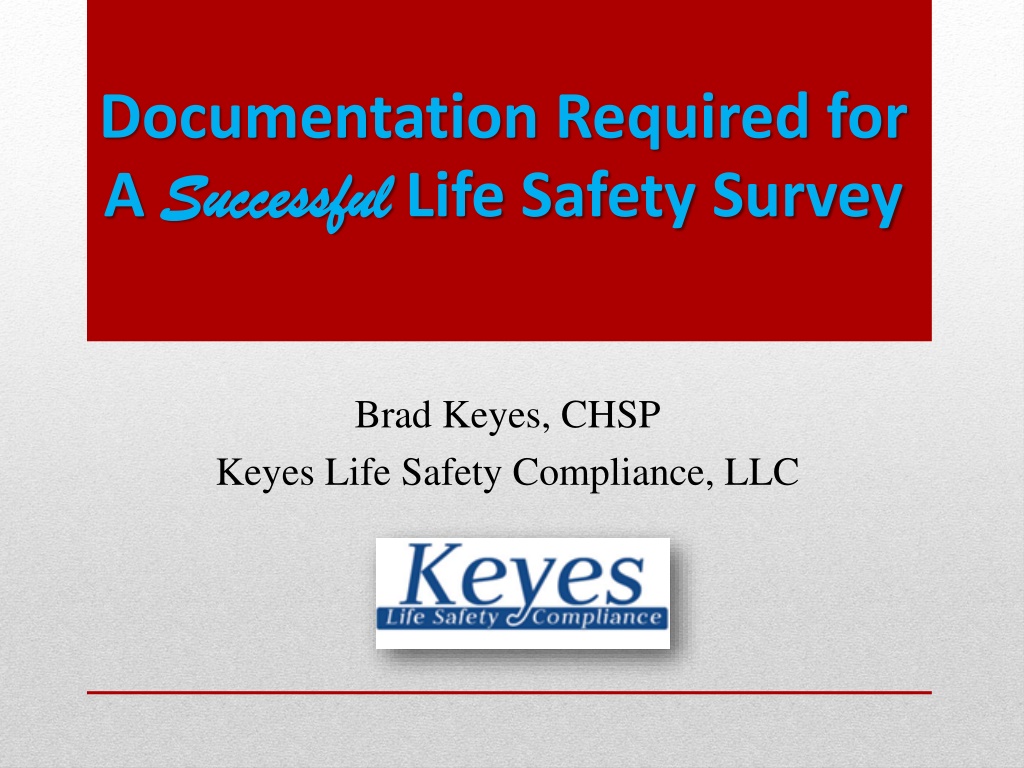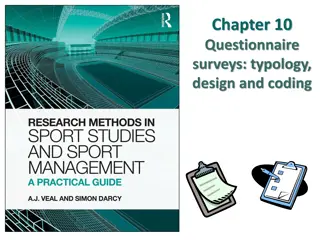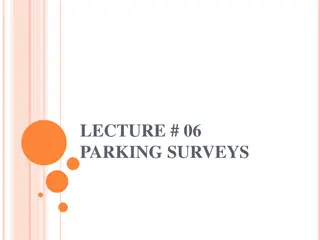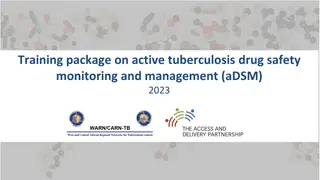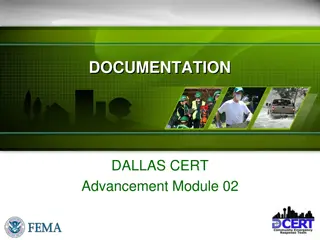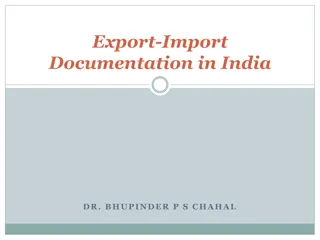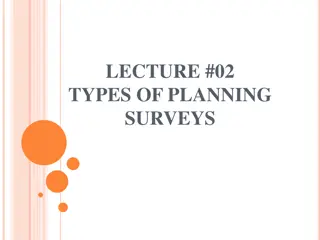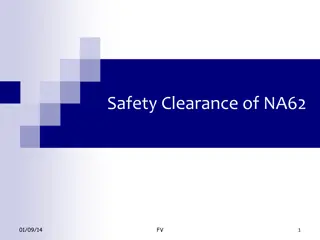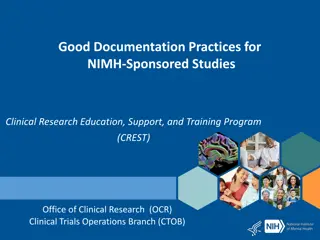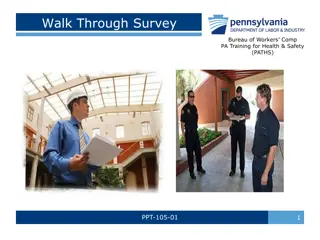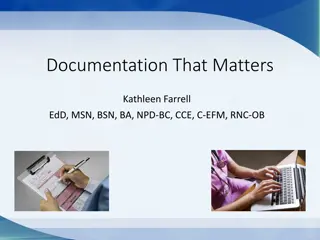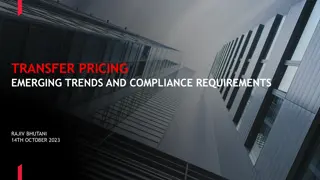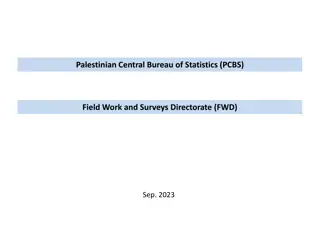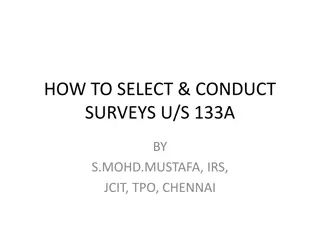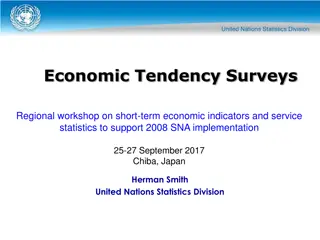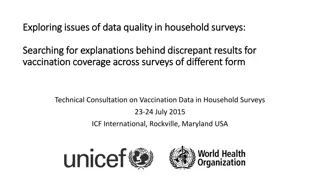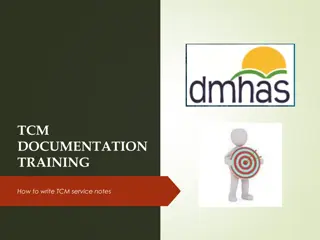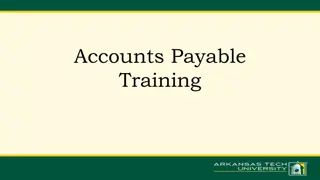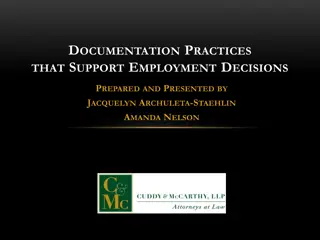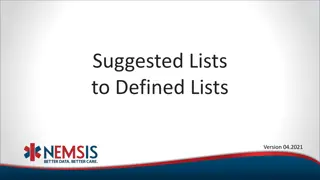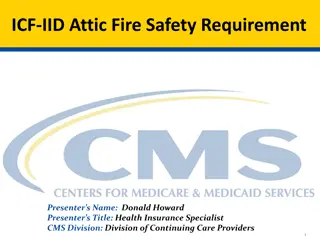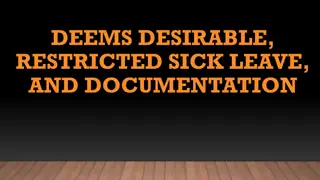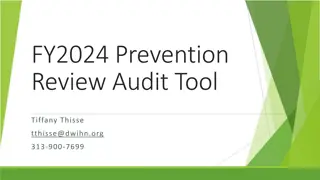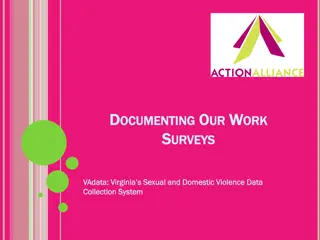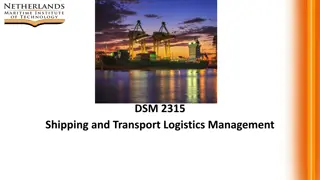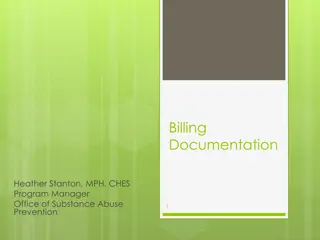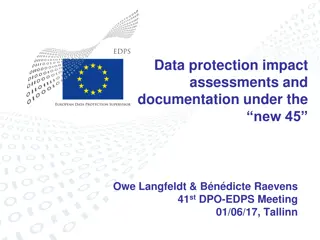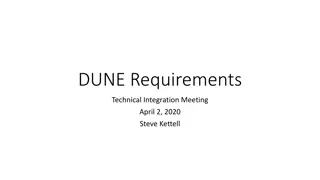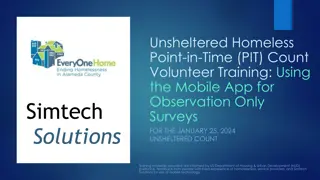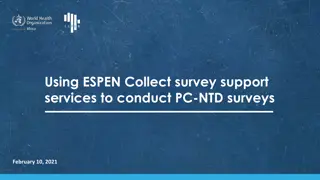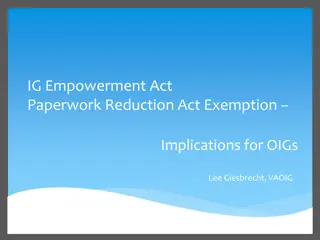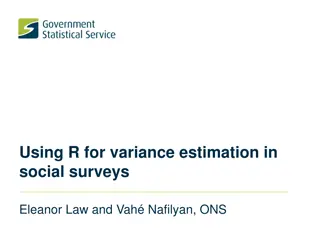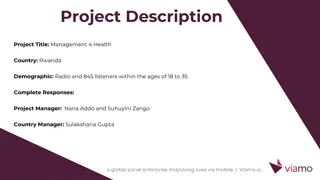Documentation Requirements for Successful Life Safety Surveys
Today's presentation focuses on the critical aspects of preparing for a life safety survey, emphasizing the importance of understanding standards, required documentation, and organizing processes. Facility managers face diverse responsibilities, making survey preparation time-consuming. Relying solely on past surveys for guidance can lead to compliance issues during the survey process. Lack of readiness has left many organizations unprepared for document reviews, highlighting the need for thorough preparation to meet regulatory standards.
Download Presentation

Please find below an Image/Link to download the presentation.
The content on the website is provided AS IS for your information and personal use only. It may not be sold, licensed, or shared on other websites without obtaining consent from the author. Download presentation by click this link. If you encounter any issues during the download, it is possible that the publisher has removed the file from their server.
E N D
Presentation Transcript
Documentation Required for A Successful Successful Life Safety Survey Brad Keyes, CHSP Keyes Life Safety Compliance, LLC
Today, we will be discussing the following issues: It s not business as usual anymore; The importance of understanding what the standards require; Discuss what documentation is required; Identify processes on how to organize the documentation for survey. Learning Objectives 2
Todays presentation will cover the most restrictive needs for a life safety survey, whether it be conducted by the state agency on behalf of the federal government or by your accreditation organization. Learning Objectives 3
Facility managers typically are saddled with the responsibilities of many departments: Maintenance Plant Operations Projects Paint Shops Environmental Services Security Laundry Life Safety It s Not Business as Usual 4
Preparing for survey can be time-consuming, which may lead the facility manager to rely on the results of previous surveys as a guide on preparation for future surveys. For example; if the last survey did not reveal any deficiencies with the fire alarm test report, then the facility manager may decide not to review the current reports for compliance. It s Not Business as Usual 5
They may think theyre ready and have all of their documentation prepared, but that approach will likely lead to problems with the survey process. It s Not Business as Usual 6
This has lead to many organizations being unprepared for the document review session to determine compliance with the standards. The LS surveyors for the state agency surveying on behalf of CMS, and the LS surveyors for the accreditation organizations are better qualified and educated on what the codes and standards require for compliance. It s Not Business as Usual 7
So, it is recommended that the hospital consider a re-start to their process: First: Read the standards! Take the time to actually read all of the standards that apply to you re area of responsibility. It s Not Business as Usual 8
Second: Ask questions if you do not understand! There is no shame in admitting you do not understand something. It s Not Business as Usual 9
It is not unusual that a typical facility manager may not fully understand what s required on a particular standard. But, it is the organization s responsibility to comply with the standards. So, if you re not 100% sure on how to comply, then it is your responsibility to ask questions. It s Not Business as Usual 10
Third: Confirm compliance by reviewing your documentation! Reading and understanding the standards is a good start, but to be complete, you must assess your own documents. It s Not Business as Usual 11
There are many reasons that it is critically important for the facility manager to review the inspection and testing documentation on the hospital s fire-safety equipment: It s Not Business as Usual 12
1. You should never trust an outside contractor for advice on compliance with a standard or regulation. If you hire a service contractor to test your fire alarm system, it is your responsibility to make sure that contractor is not only performing the test correctly, but is actually testing everything that is required to be tested. It s Not Business as Usual 13
2. Contractors frequently do not know what edition of a particular NFPA standard the hospital is required to comply with. For example, the latest edition of inspection and testing of sprinkler systems is the 2014 edition; however, the hospital is currently required to comply with the 1998 edition. The contractor may mistakenly assume you are required to comply with the most recent edition. (There are a lot of differences between the 1998 edition and the 2014 edition.) It s Not Business as Usual 14
3. Check the inspection reports / work-orders from your own staff. Make sure they understand the correct procedures to follow for that particular test or inspection. Even the most seasoned veterans may develop work-arounds or short-cuts that you may not be aware of unless you review their work. It s Not Business as Usual 15
4. Look for items that did not pass the test or inspection, or were not tested due to inaccessibility. There are no acceptable reasons not to perform a test or inspection on a device that has a requirement to do so. If a device failed, then it needs to be repaired or replaced, and then retested; and the documentation proving all of this needs to be accessible. It s Not Business as Usual 16
It is understood that Joint Commission does allow hospitals to place inaccessible fire dampers on the PFI list with a 6-year projected completion date. But, CMS does not recognize this practice and will expect all inaccessible fire dampers to be made accessible, and tested; or a waiver request may be made when the damper is cited for not being tested. It s Not Business as Usual 17
NFPA 10 (2010) - Portable Fire Extinguishers They must be inspected monthly for: Mounted > 4 inches and < 60 inches above the floor Access to FE is not obstructed FE is full by hefting Pressure gauge is in operable range Documentation Needed for a Survey 18
NFPA 12 A (2009) - Systems Semi-Annually: All systems must be inspected and tested for proper operation, without discharging the product The pressurized containers of Halon must be weighed and if a 5% net loss in weight or 10% loss in pressure, container must be refilled or replaced Halon Extinguishing Documentation Needed for a Survey 19
NFPA 12 A (2009) - Halon Extinguishing Systems Semi-Annually: All detectors to be tested for proper function; All manual devices to be tested; All actuators to be tested; All piping and nozzles to be inspected; Operate all auxiliary equipment. 5-Year Test: All system hoses, including flexible connectors, must be removed and pressure tested. Documentation Needed for a Survey 20
NFPA 17A (2009) - Kitchen Hood Extinguishing Systems Monthly Inspection: Ensure system is in its proper place; Manual actuators are not obstructed; Tamper seals and indicators are intact; Maintenance tag is in place; No obvious physical damage that might prevent operation; Ensure pressure gauge is in operable range; Nozzle blow-off caps are intact and undamaged; The protected equipment has not been replaced, modified or relocated. Documentation Needed for a Survey 21
NFPA 17A (2009) - Kitchen Hood Extinguishing Systems Semi-annual Maintenance: Check to see hazard has not changed; Examine all detectors; Examine expellant gas containers; Examine agent containers; Examine releasing devices; Verify that agent distribution piping is not obstructed Operate system without releasing agent; Fixed temperature fusible links must be replaced semi-annually, and destroyed once removed. Documentation Needed for a Survey 22
NFPA 25 (2011) - System Weekly: Fire pump no-flow churn test Electric-driven pumps changed to monthly Must start pump by lowering the water pressure at the control switch Must operate pump at no-flow for a minimum of 10 minutes (30 minutes for engine-driven pumps) Must ensure relief valve is dumping water Documentation Needed for a Survey Water Based Fire Protection 23
NFPA 25 (2011) - Water Based Fire Protection System Monthly: Control valve visual inspection to ensure they are in an open position All control valves are required to be electronically supervised (tamper switches) Chains and padlocks are not an acceptable alternative to electronic monitoring Documentation Needed for a Survey 24
NFPA 25 (2011) - Water Based Fire Protection System Quarterly: Fire department connection (FDC) inspection (where water is pumped into the building) Pre-action/Dry pipe valving priming water test Waterflow alarm devices if not vane-type of pressure switch type Documentation Needed for a Survey 25
NFPA 25 (2011) - Water Based Fire Protection System Quarterly: Hose valves (where firemen connect their hose) must be inspected quarterly to ensure: Caps are in place; Hose threads are not damaged; Valve handles are present and not damaged; Gaskets are not damaged or deteriorated; Valves are not leaking; No obstructions in valves. Documentation Needed for a Survey 26
NFPA 25 (2011) - Semi-Annually: Waterflow alarm devices if they are vane-type or pressure switch type Annually: Sprinkler inspection; all sprinkler heads and visible piping and hangers from floor; Sprinkler inspection must be documented; Sprinkler heads must be free from all foreign material (dust, dirt, plastic bags, etc.) Documentation Needed for a Survey Water Based Fire Protection System 27
NFPA 25 (2011) - System Annually: Pre-action/Dry pipe valve trip test Main drain test, conducted at all system risers, not at low point drains; Consists of: Static pressure readings; Residual pressure readings; Time required to restore to static pressure (fire pump off; jockey pump on) Control valve exercise; Must fully close then open each control valve Backflow preventer test; Conducted by licensed individuals Water Based Fire Protection Documentation Needed for a Survey 28
NFPA 25 (2011) - Water Based Fire Protection System Annually: 2 inch hose valves must be tested annually by opening then closing the valve Valve does not have to be fully opened; If cap is in place just open then close valve The purpose of this test is to just exercise the valve Documentation Needed for a Survey 29
NFPA 25 (2011) - Water Based Fire Protection System Annually: Anti-freeze test Private service fire hydrants; Requires flowing water, but at a specific amount of time Fire pump flow test; complete with churn test and switch to EM power at peak capacity Documentation Needed for a Survey 30
NFPA 25 (2011) - Water Based Fire Protection System 3-Years 1 inch hose valves must be tested every 3-years by opening then closing the valve Valve does not have to be fully opened; If cap is in place just open then close valve The purpose of this test is to just exercise the valve Documentation Needed for a Survey 31
NFPA 25 (2011) - Water Based Fire Protection System - 5-Years: Check valve inspection: Must drain system and open up check valve; Pressure gauge calibration or replacement; Standpipe waterflow test; at the hydraulically most remote location, usually the roof; Flow to 500 gpm Documentation Needed for a Survey 32
NFPA 25 (2011) - System - 5-Years: Private fire service mains (flow test); usually to private hydrants An internal inspection of piping and branch lines is required by opening a flushing connection and removing one sprinkler near the end of one branch line; Looking for slime (MIC) [Not required on plastic pipe] An obstruction investigation must be performed at all system valves, risers, cross mains, and at a representative number of the branch lines, when one of the qualifying conditions exist. Documentation Needed for a Survey Water Based Fire Protection 33
NFPA 25 (2011) - System - 20-Years: Quick-Response sprinkler head sample test or replacement 50-Years: Standard-Response sprinkler head sample test or replacement A sample is a minimum of 4 heads or 1% of the number of sprinklers per each sprinkler type, whichever is greater. If one sample head fails its test, then all heads must be replaced Documentation Needed for a Survey Water Based Fire Protection 34
NFPA 25 (2011) - System Fire Watch Requirements: A fire watch should consist of trained personnel who continuously patrol the affected area; Should have ready access to fire extinguishers; Ability to promptly notify the fire department; Look for fire, and ensure other features of life safety are not impaired. Fire watch personnel to perform no other duties; If fire watch takes more than 30 minutes to complete, then multiple personnel must be used; Water Based Fire Protection Documentation Needed for a Survey 35
NFPA 72 (2010) - Fire Alarm System: Inspection A visual inspection must be made (and documented) of the fire alarm system components to ensure that there are no changes that affect equipment performance. Quarterly: Supervisory signal devices (tamper switches, pressure switches, water level switches, duct detectors programmed as supervisory, etc.) Waterflow switches Documentation Needed for a Survey 36
NFPA 72 (2010) - Fire Alarm System: Inspection Semi-annually: Control panel batteries (sealed lead acid type) In-building voice/alarm communications equipment Duct detectors (programmed as alarm initiating) Electromechanical releasing devices Fire suppression system switches Manual fire alarm boxes (pull stations) Heat detectors Smoke detectors Interface equipment (above ceiling relays?) Alarm notification appliances (strobes/chimes) Documentation Needed for a Survey 37
NFPA 72 (2010) - Fire Alarm System: Testing Quarterly: Supervisory pressure indicating devices Supervisory water level indicating devices Supervisory water temperature indicating devices Other suppression system supervisory initiating devices Documentation Needed for a Survey 38
NFPA 72 (2010) - Fire Alarm System: Testing Semi-annually: Control panel (including NAC panels) battery load voltage test Supervisory control valve tamper switches Waterflow switches Documentation Needed for a Survey 39
NFPA 72 (2010) - Fire Alarm System: Testing Annually: Control panel equipment (including NAC panels): Function test Fuse test Interfaced equipment Lamps and LEDs Primary power supply Transponders Documentation Needed for a Survey 40
NFPA 72 (2010) - Fire Alarm System: Testing Annually: Control panel (including NAC panels) battery charger test Control panel (including NAC panels) battery discharge test for 30 minutes In-building voice/alarm communication equipment Remote annunciators Duct detectors Fire suppression system switches Documentation Needed for a Survey 41
NFPA 72 (2010) - Fire Alarm System: Testing Annually: Smoke detector functional test Interface relay equipment and emergency control functions (Test must include full activation of other system) Alarm notification appliances (strobes, chimes, bells, horns) Heat detectors Manual fire alarm boxes (pull stations) Documentation Needed for a Survey 42
NFPA 72 (2010) -Fire Alarm System: Qualifications Service personnel must be qualified in the inspection, testing, and maintenance of fire alarm systems, by one of the following: Factory trained and certified for the specific type and brand of system being serviced Certified by a nationally recognized certification organization (NICET, IMSA, etc.) Registered, licensed or certified by the state or local authority Documentation Needed for a Survey 43
NFPA 72 (2010) - Fire Alarm System: Qualifications Persons who are employed and qualified by an organization listed by a nationally recognized testing laboratory for the servicing of fire alarm systems Hospitals must have copies of the certifications on-site of all technicians who perform service: Yours and/or the contractors Documentation Needed for a Survey 44
NFPA 80 (2010) - Fire Door Annual Inspection & Test All side-hinged swing fire doors and over-head vertical rolling fire doors must be inspected and tested annually by individuals with knowledge and understanding of the operating components. Does not say what level of knowledge and understanding is required: No certification required. Documentation Needed for a Survey 45
NFPA 80 (2010) - Fire Damper Periodic Test & Inspection: Each damper must be tested and inspected 1 year after installation; Test & inspection frequency must then be every 4 years, except in hospitals where the frequency must be every 6 years (Does not say healthcare occupancies ); Full unobstructed access to the fire damper must be verified and corrected as required (Note: No standard exists that allows inaccessible dampers to remain inaccessible You must make them accessible); Fusible links must be removed to ensure full closure; Documentation Needed for a Survey 46
NFPA 105 (2010) - Smoke Damper Periodic Test & Inspection: Each damper must be tested and inspected 1 year after installation; Test & inspection frequency must then be every 4 years, except in hospitals where the frequency must be every 6 years (Does not say healthcare occupancies ); Full unobstructed access to the smoke damper must be verified and corrected as required (Note: No standard exists that allows inaccessible dampers to remain inaccessible); Fusible links must be removed to ensure full closure; Documentation Needed for a Survey 47
NFPA 96 (2011) - Maintenance of the water- based fire suppression system (Gaylord) for the cooking hood and exhaust duct must be conducted semi-annually, by factory-trained, qualified and certified individuals; Sprinkler heads must be cleaned or replaced annually; Documentation Needed for a Survey Cooking Hoods Test & Inspection: 48
NFPA 96 (2011) - Cooking Hoods Test & Inspection: Cooking hoods, exhaust ducts, plenums, and exhaust fans must be inspected and cleaned on a semi-annual basis, unless solid fuel is used which requires monthly; All fusible links must be removed and destroyed, and replaced with new on a semi-annual basis. Documentation Needed for a Survey 49
NFPA 99 (2012) - Health Care Facilities: Required Testing & Inspection- Generators The requirement to test the emergency power generators with intervals not less than 20 days and not more than 40 days is found in NFPA 99, not NFPA 110 All transfer switches must be manually switched during the monthly generator load test The scheduled generator tests must be conducted by competent personnel to keep the equipment ready to function and in addition, serve to detect causes of malfunction and to train personnel in operating procedures Documentation Needed for a Survey 50
